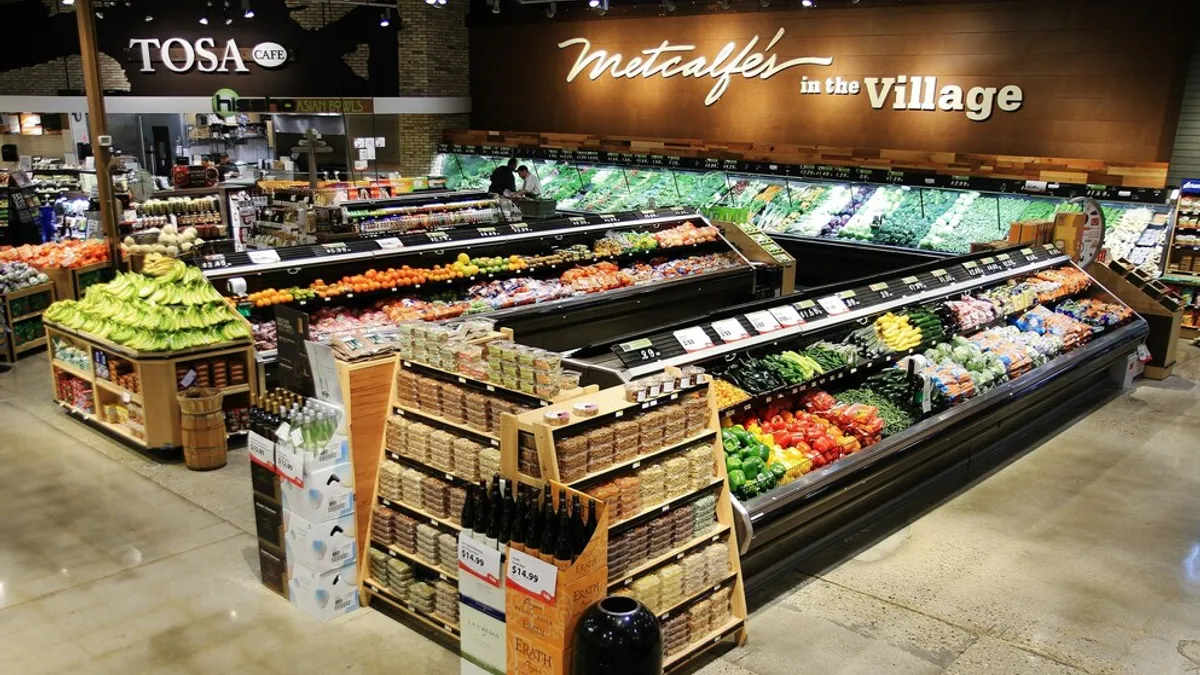With 2025 just a few weeks away, Walmart’s top executive expects food price inflation won’t budge from around its current level at the start of the new year — instead of ticking down, as consumers have hoped.
“I don't know what the whole year is going to look like. I hope and I think it could be better as these commodities adjust — some of them,” Doug McMillon, the retailer’s president and CEO, said Tuesday during the 2024 Morgan Stanley Global Consumer and Retail Conference.
McMillon said he is “disappointed” at where food inflation currently sits, highlighting that eggs and dairy are the main drivers. Customers have been upset that food prices are currently “a lot higher” than before the pandemic, McMillon said, noting that Walmart has invested in rollbacks to lower prices. Food-at-home prices have jumped 25% compared to before the COVID-19 pandemic, according to FMI – The Food Industry Association.
In November, food-at-home prices increased 1.1% over the last 12 months, with the indexes for meats, poultry, fish and eggs recording the biggest hikes, according to Consumer Price Index data by the U.S. Bureau of Labor Statistics. Since last December, the annual rate of food-at-home prices has held steady at about 1%, according to government data.
Even as inflation drags on consumer spending, strong price positioning and inventory management levels have Walmart feeling optimistic for the year ahead, McMillon said, noting the retailer is “front-footed, both in food and general merchandise.”
Eggs and milk prices will adjust faster than those for dry grocery, McMillon added. Processed food prices likely won’t drop to pre-pandemic levels and may not come down much during 2025, he said.
Meanwhile, for general merchandise, Walmart has mostly seen prices return closer to prepandemic levels.
During its third quarter, Walmart saw a roughly 1% uptick in grocery inflation, which the retailer said was largely due to eggs.
Turning to other parts of Walmart’s business, McMillon said Walmart+, the company’s membership program, is working to grow consumer enrollment: “We should have more memberships, and we're working towards that.” One of the challenges is that people are often unaware that Walmart+ includes delivery of items not just from the retailer’s physical locations but also from its online marketplace.
Walmart+ launched in 2020 as the retailer was ramping up its e-commerce. However, Walmart downplayed the membership program at the time “because we wanted to make sure the quality of the experience was right,” McMillon said, adding that marketing has increased as Walmart+ has improved. The company still has not listed membership numbers: “I don’t want it to become some proxy for the value of the company,” he added.
In recent years, Walmart has nabbed more higher-income consumers. Households that earn more than $100,000 made up 75% of Walmart’s share gains in the U.S. during the third quarter, CFO John David Rainey told investors last month. The retailer expects to continue appealing to a variety of consumer income cohorts, from low-income to high-income, McMillon said Tuesday, noting that shoppers with more money like the breadth of Walmart’s online assortment and its convenience options.
“We’ve been maintaining those price gaps through pandemic periods of time and through inflationary periods of time, and that continues up until this day, and we’ll keep managing price gaps by day by week,” McMillon said. “We’ve got an assortment that’s really growing and the experience is getting better. We’re just saving people more time.”














